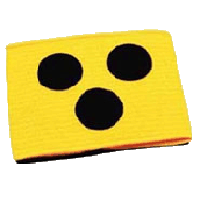Sometimes when I explain someone what Stargardt is and how I see with it, the reaction is :
- Amazing that you are so well adapted . One can't tell that you have it.
I then thank for the compliment, but think to myself that it's not quite so simple. Anyone watching me more closely may notice that in addition to the direct signs ( such as when I unpack my magnifying glass to read the menu ) there are also many less obvious clues.
For instance when I reach very carefully for my wine or water glass and catch it only at the second try. Or when I do not even look , but just start to feel with my hand around my desktop after the stapler, because I know where it is sitting . Or when I briefly hesitate at the top of the stairs and feel with my foot after the first stage , so that I catch the following steps well .Or when I enter a room with many people and fist stop somewhere aside looking around whom I might know (usually by the voice) before joining someone. Or when I react too late to a question because I have not noticed whether the questioner looked at me or at the person next to me . In a nutshell , one could say that I 'm never sure who or what I see and am therefore behaving accordingly :careful , cautious, waiting.
- Amazing that you are so well adapted . One can't tell that you have it.
And what if you could see it ? What would be different ? There is a long and probably never-ending discussion among the visually impaired whether the white stick is useful or not . It may help locating pitfalls and tell the fellow human beings that here's someone traveling with limited or no eyesight . On the other hand , it may trigger overeager readiness to help, or even the opinion that the stick-bearer is mentally somewhat less well-off . Does this sound familiar ? You do not want to be treated differently than the others , and at the same time you want that your environment is considerate of your particularities . With Stargardt this becomes obvious.

